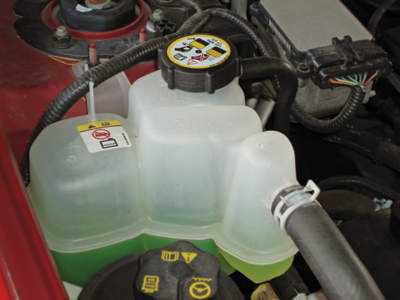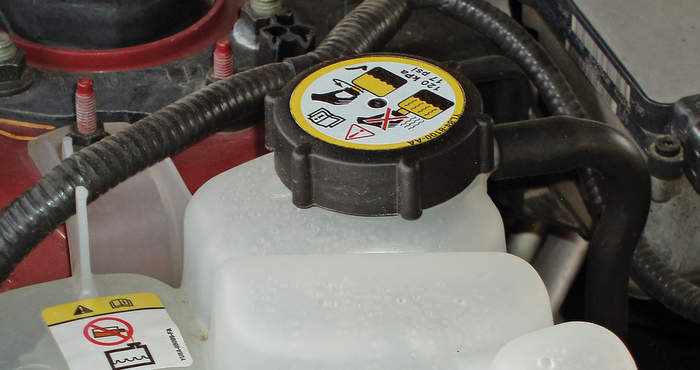MECHANICAL FAILURES

Mechanical cooling system failures will usually store a P0128 DTC. To illustrate, let’s look at the enable criteria for a P0128 cooling system DTC on a 2008 Subaru Outback with the 2.5L 16-valve “H4” engine. According to service information, P0128 indicates that the thermostat is considered defective when the coolant temperature remains lower than its estimated or target temperature. The thermostat is considered good if the ECT reaches a minimum of 167º F. Note also that there’s no default strategy for a failed thermostat, which means that the engine and powertrain will react to the actual coolant temperature, rather than a default value substituted by the PCM. See Photo 2.
The “judgment value” or enable criteria for a P0128 includes a minimum 10.9 battery volts, an estimated intake air temperature of at least 19.4º F, a startup ECT of 131º F, an estimated or target ECT of 158º F, and an 86º F lower-than-estimated coolant temperature, all of which must occur at a vehicle speed of 18.6 or more mph.

With this application, a P0128 DTC requires two continuous drive cycles before it will illuminate the Malfunction Indicator Light (MIL). The P0128 will automatically clear after 40 repeated drive cycles. The MIL itself will clear when a successful drive cycle is repeated three consecutive times. Obviously, there’s a lot of room here to create a no-code, intermittent driveability complaint. See Photo 3.
An accurately calibrated ambient air and ECT sensor is essential for the PCM to detect a major deviation from the target coolant temperature. Since enable criteria is very application-specific, the data parameters of Subaru’s P0128 DTC include intake air and startup, estimated and actual coolant temperatures. To function correctly, the ECT sensor and the thermostat’s wax pellet must contact liquid coolant. So, it’s always important to check for a low coolant level caused by an external coolant leak or by an internal coolant leak through a bad cylinder head gasket or cracked cylinder head.
Assuming the coolant level is correct, check for premature coolant flow by monitoring the upper radiator hose temperature. A luke-warm upper hose usually indicates a stuck-open thermostat. If the thermostat has stuck open, it’s entirely possible that a number of DTCs might appear after the thermostat is replaced, simply because ECT has restored the enable criteria for many sensor- and actuator-based DTCs.
On the flip side, if the thermostat sticks closed, the upper hose will remain much cooler than the engine block. If a sticking thermostat causes the engine to severely overheat, the ECM should store a P0217 DTC, indicating an overheat condition. And, during an overheat condition, many ECMs are programmed to help cool the engine by disabling alternate cylinders in the firing order. Since overheating is often a transient condition, it’s always important to check “history” codes for indications.














